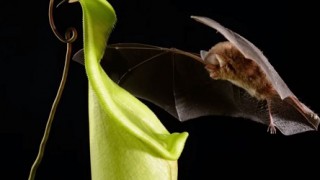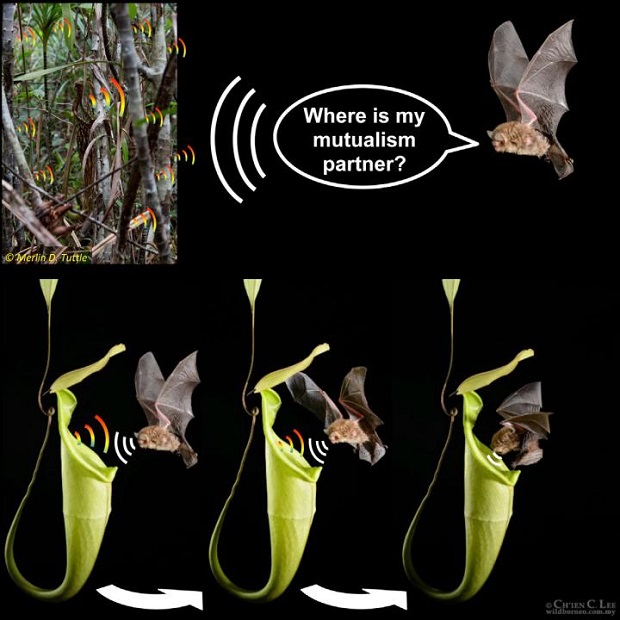
A new study has uncovered a bizarre relationship between the insect-hunting bats of Borneo and carnivorous pitcher plants. The study, conducted by lead author Ulmar Grafe of the University of Brunei Darussalam and colleagues, revealed that pitcher plants use acoustic reflectors to publicize their location to bats.
The research team first wondered about the relationship between two relatively rare species - the plant species N. hemsleyana, and the bat species Kerivoula hardwickii - after stumbling across a number of bats roosting inside the plants’ odd-shaped structures.
Intriguingly, these paleotropical plants use specialized structures to attract their winged friends. The N. hemsleyana species has a special adaptation that ensures its leaves “stand out,” on an acoustic level. “The bats are clearly able to distinguish their plant partner from other plants that are similar in shape but lack the conspicuous reflector,” explained Ernst-Mortiz-Arndt-University researcher Michael Schöner.
But why do the plants “advertize” themselves in this way? According to the scientists, the bats and plants have a symbiotic relationship. The bats are rewarded with a safe, parasite-free place to stay cool and roost, while the pitcher plants, in turn, benefit from the bat excrement.
The plants feed off the nitrogen stored within the feces, thereby improving fertilization. These research findings also explain why this particular pitcher plant, which typically thrives in the tropical moist forests of Borneo, is so bad at luring insects.
N. hemsleyana isn’t the only plant type to lure bats using “acoustic reflectors,” however. Other plants, too, use specially curved petals and leaves to better reflect the creatures’ ultrasound emissions; this includes a number of plants that necessitate nectar-feeding bats for pollination.
According to Schöner, the carnivorous plants have overcome “… the problem of nutrient deficiency in a very unusual way by reversing the ‘normal system’ of animals feeding on plants.” He continues, “While N. hemsleyana reduced many insect-attracting traits, it obviously exhibits some traits that are highly attractive for a species that provides the plants with nutrients without being digested by the plant itself.”

Speaking to NBC News, Schöner said his team cannot say, with any certainty, whether the plants evolved these structures specifically for the bats. However, he said it was likely that evolution drove the process.
The study, entitled Bats Are Acoustically Attracted to Mutualistic Carnivorous Plants, was published in the journal Current Biology.
